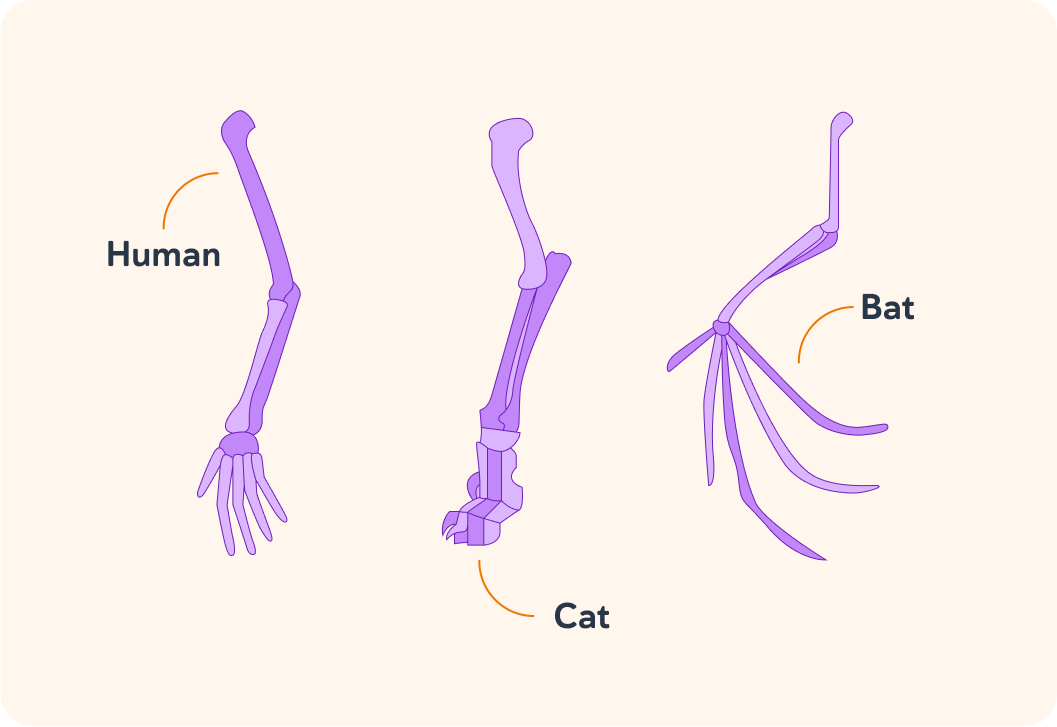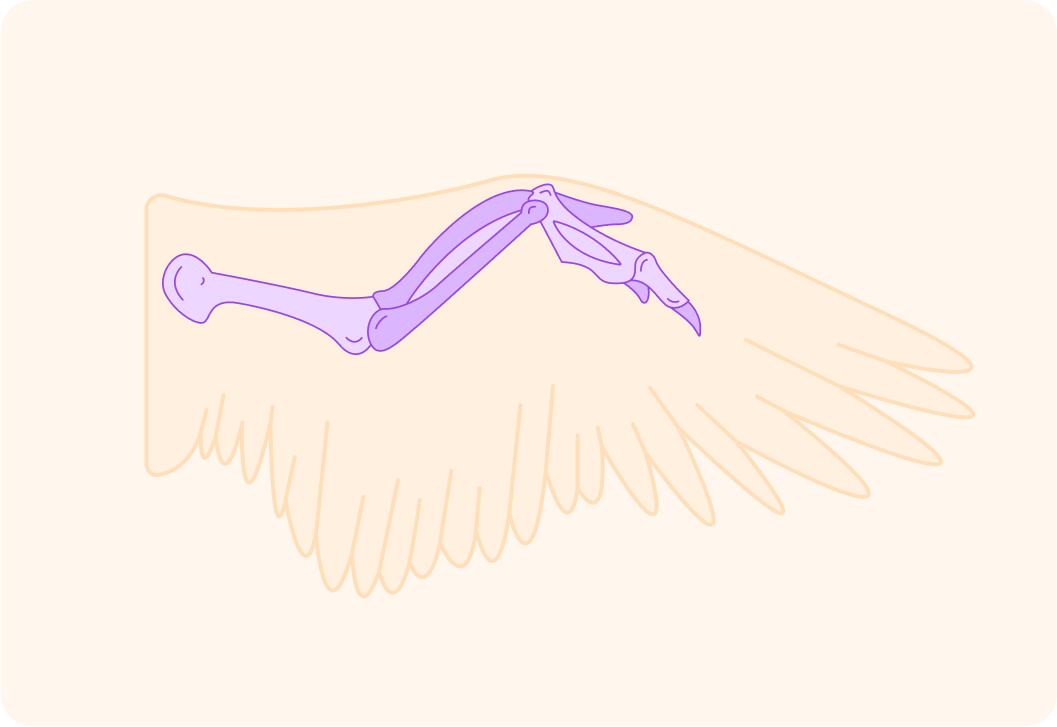YOU ARE LEARNING:
Evidence for Evolution: Pentadactyl Limb

Evidence for Evolution: Pentadactyl Limb
There are further evidence for evolution, shown in the anatomy of the pentadactyl limb, or five fingered limb.
How many digits (fingers) are there in each one of these skeleton limbs? They are all from different mammals.


What do you think the word "pent" means (as in pentadactyl limb)?

The basic structure of your arm and the basic structure of your leg are the same. This is the same for the legs, arms and limbs of all terrestrial vertebrates. Terrestrial vertebrates are land living animals with a back bone.
How many bones are in your upper arm or upper leg?

How many bones are in your lower arm or lower leg?

Look again at the image of the bones in these limbs from a human, a cat and a bat.
Look at the common features of the structure of these limbs.

Each has one bone in the upper limb, two in the lower limb and five digits; this is known as a pentadactyl limb structure. But why are they all different in overall look?
A) They are designed to do different jobs. B) They have evolved to do different jobs. C) All animals have this structure in their limbs.


The pentadactyl limb is an example of a homologous structure. That means they all look very similar. This suggest that all mammals had a common _ _ _ _ _ _.

Think back to the structure of the bat's limb. What has changed to make it function as a wing, rather than a hand do you think?

The image shows the bones in the wing of a bird.
Birds are not part of the same classification group as bats. Bats are mammals, but birds are not.

Why is the bone structure very similar to that of a bats (and other mammals)?
A) They were designed to do the same job. B) They do the same job so they have to be the same. C) There must have been a common ancestor of birds and mammals.


The pentadactyl limb shows how a common structure can be adapted by natural selection to perform different functions. Is this evidence or proof of evolution?

